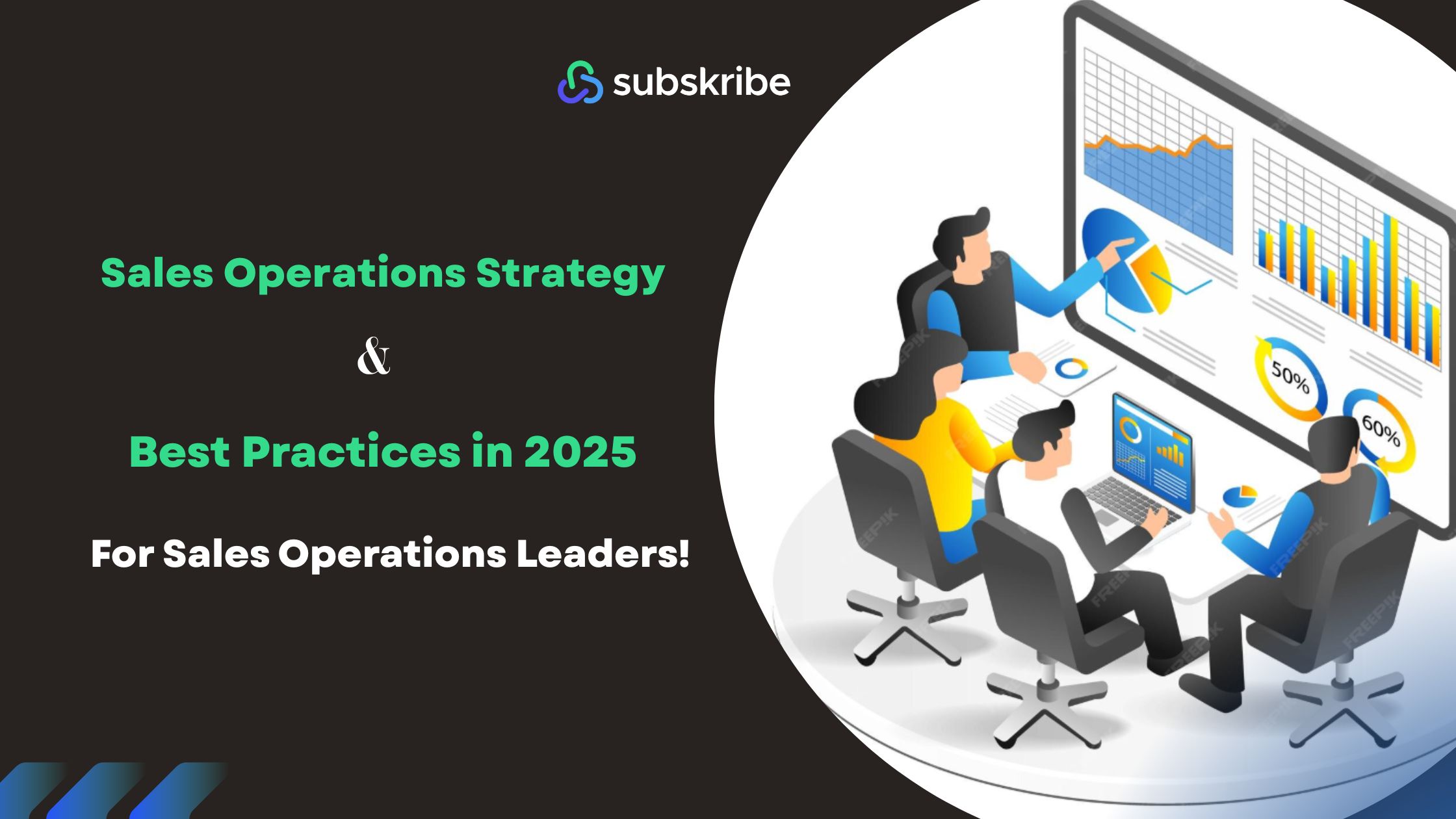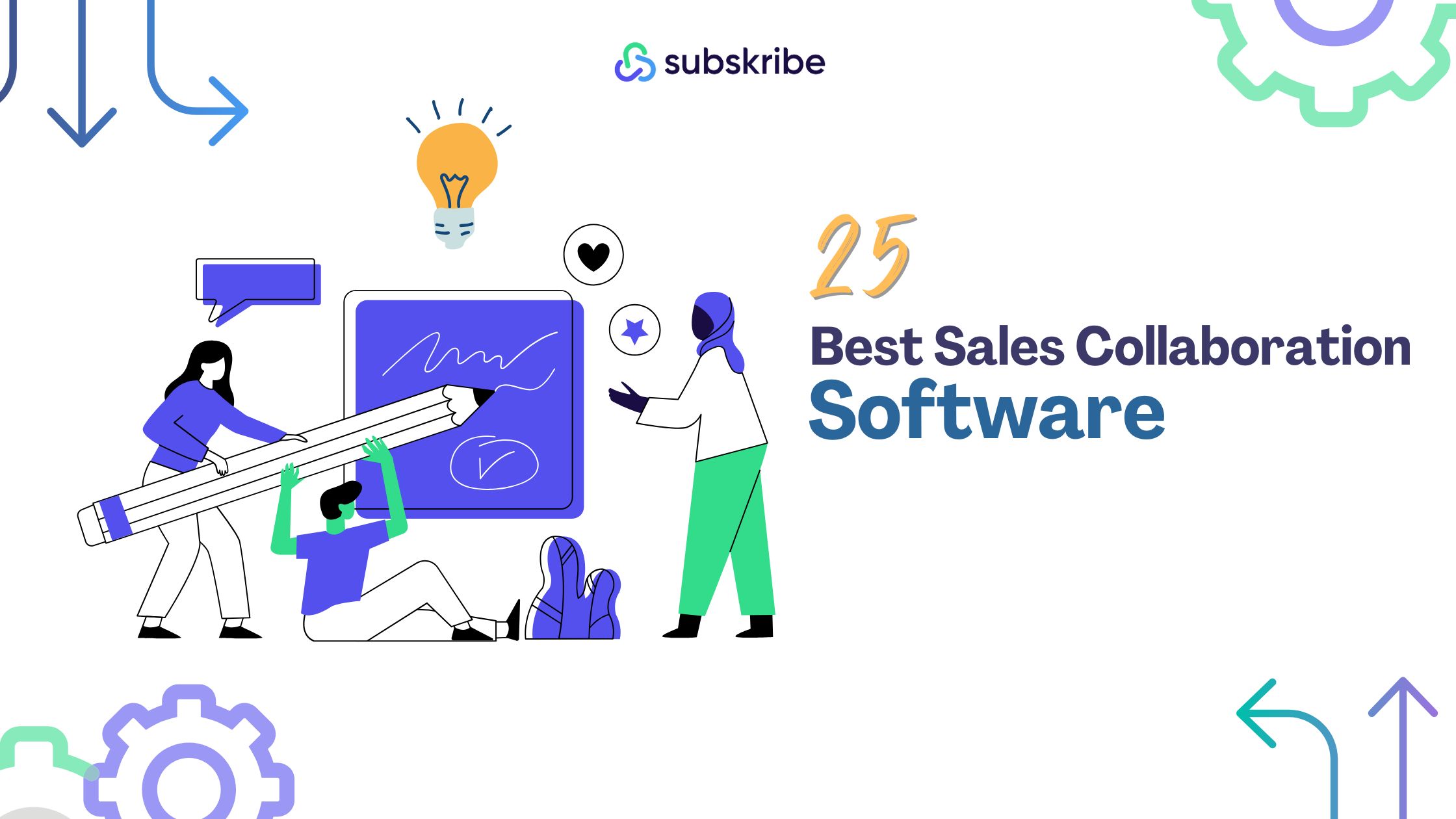Mastering Sales Operations Strategy & Best Practices in 2025
Sales operations used to be the back-office function that kept spreadsheets tidy and CRM data clean, barely on leadership's radar until something broke. Not anymore. In 2025, sales ops has become one of the most strategic functions in revenue organizations, separating companies that scale smoothly from those that stumble at every milestone.
Here's what's at stake when sales operations are weak: wasted hours building quotes manually, forecasts consistently missing by 20%+ (eroding board confidence), misaligned territories causing rep conflicts, deals stuck in approval limbo while competitors move faster, and your best reps burning out from operational friction. Perhaps most costly: zero visibility into what's working, so you keep throwing budget at the wrong problems.
The good news? Every problem is solvable with the right approach. In this guide, we'll explore a winning sales operations strategy and sales operations best practices that turn chaos into predictability, covering what sales ops encompasses today, how to build scalable frameworks, proven practices you can implement immediately, realistic implementation roadmaps, essential metrics, common pitfalls to avoid, and emerging trends shaping the future. Whether building from scratch or optimizing existing operations, you'll get the blueprint to transform sales ops from cost center to revenue multiplier.
What Is Sales Operations?
Sales operations is the strategic function responsible for designing, optimizing, and managing the systems, processes, and infrastructure that enable your sales team to generate predictable revenue efficiently. But that definition doesn't capture how dramatically the role has evolved.
Ten years ago, sales ops was tactical: updating Salesforce fields, running commission reports, generating pipeline dashboards. Today's sales operations leaders are revenue architects who shape go-to-market strategy, tech stack decisions, and organizational design. The shift happened because B2B selling became exponentially more complex: longer sales cycles, buying committees, product-led growth motions, and usage-based pricing all require sophisticated operational infrastructure.
Understanding where sales ops fits matters. Sales enablement focuses on the "how" of selling training, content, methodology, and coaching. Sales ops focuses on the "infrastructure" workflows, tools, data, and processes that make the revenue engine run. Revenue operations (RevOps) aligns sales ops, marketing ops, and customer success ops under unified processes and metrics.
Sales operations pursues four core objectives: operational efficiency (eliminating friction so deals move faster), revenue predictability (building forecasting systems that enable confident planning), data-driven analytics (surfacing insights for smarter decisions), and process discipline (creating standardized workflows that scale).
Modern sales operations encompass six critical pillars: process design and optimization, forecasting and pipeline management, technology and tools management, data and analytics, sales compensation and incentive design, and territory and capacity planning. When these pillars work in harmony, you create a revenue machine that scales predictably.
Why Sales Operations Strategy Matters
The difference between reactive and proactive sales operations is the difference between fighting fires and preventing them, between patching problems and engineering solutions.
Reactive sales ops: Your deal desk scrambles with custom pricing for every enterprise deal. Your CRM is a mess of duplicates and incomplete data. Your forecasts swing wildly. You're constantly adding new tools without removing old ones, creating a bloated stack nobody fully uses.
Strategic sales operations transform this chaos. When you have a clear sales operations strategy, you shift to proactive optimization, anticipating challenges at twice your current size and building infrastructure that scales naturally.
This delivers three critical outcomes. First, it drives sustainable growth by removing operational ceilings. Companies with mature sales ops double their team without doubling deal cycle time. Second, it creates alignment between revenue teams and leadership; everyone rows in the same direction. Third, it enables true scaling through faster rep ramps, consistent execution across regions, and spreading best practices.
The risks without a strategy compound quickly: organizational silos, redundant tech stacks, unreliable forecasting, and poor tool adoption. Research shows companies with documented sales operations strategies close deals 25-30% faster, achieve 90%+ forecast accuracy, and see 20-40% productivity improvements versus reactive peers.
Building a Robust Sales Operations Strategy
Creating a world-class sales operations strategy requires designing the right infrastructure for your business model, growth stage, and market dynamics. Here's an eight-phase framework:
Phase 1: Set Vision, Mission & Guiding Principles
Align your sales ops mission with company objectives. Define your remit explicitly: what does sales ops own versus sales enablement or finance? Create a mission statement like "Enable predictable revenue growth by designing scalable processes, providing actionable insights, and eliminating friction from our sales motion."
Phase 2: Assess Current State & Maturity
Audit four dimensions: people, processes, technology, and data. Use a maturity model to benchmark where you are: Level 1 (reactive, manual) to Level 5 (predictive analytics, continuous optimization). This reveals your starting point and sets realistic improvement timelines.
Phase 3: Define Strategic Priorities & Initiatives
Identify 3-5 priorities that move the needle most. Balance quick wins (basic pipeline hygiene, automated quote generation) with long-term investments (unified revenue database, AI-powered deal intelligence). Prioritize ruthlessly based on impact and feasibility.
Phase 4: Design Operating Model & Structure
Decide on your structure. Centralized ops under one leader or embedded specialists within regional teams. Define roles clearly: Who owns CRM administration? Who manages compensation? Who runs forecast reviews? Document reporting lines and decision rights.
Phase 5: Choose the Right Tech & Tools
Start with core systems: CRM, CPQ, and forecasting platforms. Layer in complementary tools for engagement, revenue intelligence, and enablement. Evaluate on functionality fit, integration capabilities, and total cost of ownership. Tools that don't share data create more work.
Phase 6: Implement Processes, Standards & Governance
Document processes that drive predictability. Implement pipeline hygiene standards, forecast cadences, and territory assignment rules. Build playbooks that capture tribal knowledge. Establish data governance with clear ownership. Make compliance easy through automation.
Phase 7: Measure & Iterate
Define KPIs: forecast accuracy, sales cycle length, win rate, quota attainment, rep ramp time, tool adoption, and data quality. Create feedback loops that turn insights into action. Embrace continuous improvement: launch, measure, gather feedback, iterate.
Phase 8: Drive Change Management & Adoption
Build buy-in by involving sales leadership early. Create communication plans explaining why changes matter. Invest in comprehensive training beyond one-time sessions. Celebrate early adopters. Measure adoption and address resistance proactively.
Sales Operations Best Practices
Implementing sales operations best practices transforms strategy into results. Here are the most impactful practices:
Establish a Clear, Documented Sales Process
Fundamental sales operations best practices start with standardized processes guiding every deal. Map your buying journey, define stage criteria, and document required activities. One SaaS company reduced sales cycles by 18 days simply by documenting stage definitions and enforcing progression criteria.
Enforce Rigorous Data Hygiene & Governance
Data quality is the foundation of all sales operations best practices. Poor data means inaccurate forecasts and misaligned territories. Establish standards, build CRM validation rules, assign data stewards, and create regular audits. A B2B company improved forecast accuracy from 72% to 94% in two quarters through weekly hygiene reviews.
Drive Cross-Functional Alignment Through Regular Syncs
Effective sales operations best practices recognize that sales doesn't operate alone. Schedule regular syncs between sales ops, finance, legal, product, and marketing. Make them problem-solving forums, not status updates.
Automate Repetitive Tasks to Maximize Selling Time
The best sales operations best practices leverage automation for high-volume tasks like quote generation, contract approvals, and data entry. Modern CPQ systems reduce quote creation from hours to minutes. Companies report reps spending 30-40% more time actually selling.
Run Structured Pipeline & Deal Reviews
Regular reviews rank among the most valuable sales operations best practices. Conduct weekly reviews with managers, monthly with leadership. Use consistent frameworks to examine deal health, next steps, and blockers. One company reduced quarterly miss rates from 15% to under 5% through structured cadences.
Apply Forecast Segmentation & Scenario Planning
Advanced sales operations best practices include segmenting forecasts by region, product, segment, and rep tenure. Build best-case, worst-case, and most-likely scenarios for informed decision-making.
Optimize Territory & Capacity Planning Continuously
Territory design is a high-leverage among sales operations best practices. Review territories quarterly, balancing equity with opportunity. Use data on account density, deal size, and sales cycle to right-size territories.
Embed Feedback Loops From Frontline Reps
The most effective sales operations best practices incorporate continuous input from process users. Create mechanisms for feedback, hold regular office hours, and act on insights.
Foster Data Literacy & Iterate Based on Metrics
Among emerging sales operations best practices, building data literacy deserves attention. Train reps to read dashboards and interpret metrics. Make every process change metrics-driven, not gut-driven.
Implementation Roadmap
Months 1-2: Foundation & Quick Wins - Current state assessment, basic pipeline hygiene, automate one manual process, create weekly forecast cadence.
Months 3-4: Core Infrastructure - Audit tech stack, implement/optimize CPQ, document sales process, launch structured deal reviews.
Months 5-7: Advanced Capabilities - Territory optimization, forecast segmentation, executive dashboards, formal data governance.
Months 8-12: Optimization & Scale - Gather feedback, iterate processes, implement advanced analytics, create comprehensive playbooks.
Prioritization Framework: High-impact, low-effort first. Allocate 60% to foundational work, 40% to quick wins proving ROI.
Metrics, KPIs & Dashboards
Effective sales operations best practices demand rigorous measurement. Track both leading indicators (pipeline coverage, activity levels) and lagging metrics (revenue closed, quota attainment).
Core KPIs: Forecast accuracy (90%+ is world-class), sales cycle length, win rate, deal velocity, quota attainment (60-70% hitting quota is healthy), rep productivity, and tech stack ROI.
Dashboard Tiers: Executive (high-level metrics, weekly reviews), Manager (pipeline health, daily use), Rep (individual performance, continuous access).
Reporting Cadence: Daily snapshots, weekly forecast reviews, monthly retrospectives, quarterly business reviews.
Common Pitfalls & How to Avoid Them
Over-Tooling Before Process Maturity - Document ideal processes first, then find enabling tools. Don't automate chaos.
Lack of Executive Support - Secure a C-suite champion early. Frame initiatives around business outcomes they care about.
Ignoring Adoption - Involve end users early, communicate the "why," provide comprehensive training, and measure adoption rigorously.
Data Silos - Establish clear governance with assigned stewards. Define single sources of truth. Implement automatic data syncing.
Overcomplication - Start simple with an 80/20 approach. Handle common scenarios well, add complexity gradually based on actual need.
Future Trends in Sales Ops
AI-powered deal intelligence predicts close probability and recommends next actions. Conversation intelligence analyzes sales calls to identify winning patterns. Unified revenue operations platforms eliminate data silos. No-code automation democratizes process building. Adaptive territory planning adjusts continuously based on data rather than annual static planning.
Transform Your Sales Operations with Subskribe
Building a world-class sales operations strategy and implementing proven sales operations best practices requires the right infrastructure.
Subskribe's AI-native Quote-to-Revenue Platform eliminates operational friction, slowing scaling SaaS companies. Our AI- native CPQ transforms quote generation from hours to minutes. Complex enterprise deals with ramps, usage tiers, and custom terms? Subskribe handles them effortlessly while maintaining pricing governance.
We unify your entire quote-to-revenue process from pricing through billing and revenue recognition in one platform. No more data handoffs, reconciliation nightmares, or approval purgatory.
Sales ops leaders love Subskribe for: Configuring complex pricing without engineering support, generating real-time quotes during discovery calls, automating approval routing, maintaining pricing governance without slowing deals, seamless Salesforce syncing, and scaling from dozens to hundreds of reps without rebuilding infrastructure.
Ready to see how Subskribe transforms sales operations? Schedule a demo and discover how leading SaaS companies close deals faster, forecast more accurately, and scale revenue operations with confidence.
Frequently Asked Questions
What's the difference between sales operations and sales enablement?
Sales operations focus on infrastructure, processes, systems, and data: CRM management, forecasting, territory planning, and tech stack optimization. Sales enablement focuses on skills, content, and methodology: training, playbooks, competitive intelligence, and coaching. Both are critical and should collaborate closely.
How large should my sales ops team be?
Common benchmark: one sales ops person per 10-15 quota-carrying reps, varying by complexity. Early-stage companies might start with one generalist supporting 20+ reps. Enterprise organizations might need 1:8 ratios. Consider process maturity, tech complexity, and strategic initiatives when sizing.
What's the first hire I should make in sales ops?
Hire a strategic generalist who can handle CRM administration, process design, basic analytics, and cross-functional coordination. Look for sales experience, strong analytical skills, and ability to influence without authority. Add specialists as you scale.
How do I measure sales ops ROI?
Track forecast accuracy gains, sales cycle reduction, win rate increases, rep productivity improvements, quota attainment rates, and rep retention. Also measure time to generate quotes, approval cycle times, data quality scores, and tool adoption rates.
What are the most important sales operations best practices for startups?
Start with foundational sales operations best practices: document the sales process with clear stage definitions, implement basic CRM hygiene rules, establish a weekly forecast cadence, and automate quoting with CPQ. Focus on scalable foundations rather than complex systems. Build processes for 50 reps before optimizing for 500.















